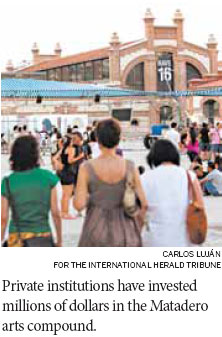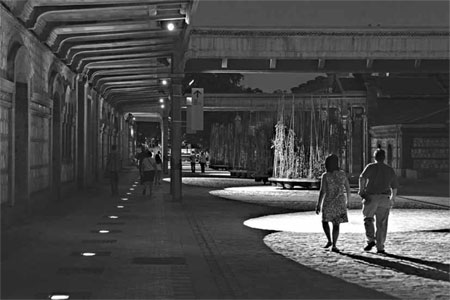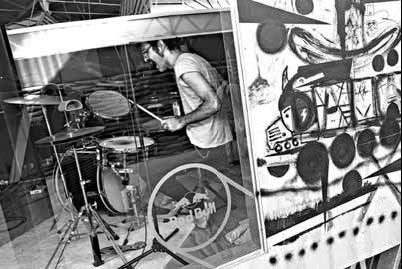Madrid art space welcomes business
Updated: 2013-10-13 08:24
By Doreen Carvajal(The New York Times)
|
|||||||
MADRID - Bloodstains mixed with graffiti mark the walls of this city's old slaughterhouse and its vast compound of arched neo-Moorish pavilions. They are signs of an eclectic history: over the last century, the complex, called Matadero Madrid, has changed from an abattoir to a homeless squat to an outpost for contemporary art, theater and documentary films.
Now Matadero is evolving into a cultural laboratory, where a new arts financing strategy is being tested. Companies and institutions are providing financial support to supplement dwindling government arts subsidies, but with a twist: they don't just send checks, they move in.
Within the walled 5,500-square-meter center, there are restaurants and public theaters that last year drew more than 500,000 visitors. But five new residents are private institutions, including a designers' association, a publishing house's foundation and offices of Red Bull, the Austrian energy drink maker.
They are in the compound rent-free for now, but have invested millions in the remodeling of pavilions there, as well as in programming, from art exhibitions to music festivals.
These new partnerships are forged, out of necessity, here in Spain, where government support for culture has plunged by almost 50 percent over the last four years, a result of a lingering economic crisis. In other struggling countries in Europe, austerity policies have forced art institutions to curtail programs and court private donors.
"In the future, none of Spain's cultural institutions are going to recover the budgets they had," said Alberto Fesser, head of a Madrid nonprofit. "The alternative path is this mix of private and public income."
There is, though, some wariness about how far to press this approach. Increasingly, in some European countries, the emerging downside of corporate patronage is that culture is heavily influenced by those businesses. One example is a museum exhibition in Paris this year devoted to the "art" of Chanel No. 5 perfume; in France, this trend has been mocked as "publicity exhibits."
Casa del Lector, a foundation to promote reading created by the founder of the Spanish textbook publisher Anaya, moved into Matadero last fall after financing a $16.8 million makeover of a pig slaughterhouse within the compound into a high-tech lecture and exhibition space. The foundation offers lectures, workshops and art exhibitions on themes like Bram Stoker's "Dracula."
Red Bull moved into Matadero in 2011. It spent more than $2.2 million to create its own musical academy and fashion a garden in the interior of the building. The academy includes a professional recording studio and performing space. The new arrangement has helped Matadero thrive, and it is looking for partners to finance a multimillion dollar makeover of two more empty pavilions.

The center draws revenue from two restaurants in the compound and is opening a bicycle rental business. Revenue from warehouse rentals and fees grew to roughly $930,000 last year.
"We're creating a new model of partnership," said Victor Flores, the cultural director for Red Bull in Spain, who calls it the first time a company has worked so closely with a public cultural institution in Spain. "In Spain's cultural landscape, museums have sponsors, but they don't get involved so deeply in terms of the programs, schedules and how to create and run space."
The existing arrangement has helped Matadero thrive, earning a spot on a Top 10 list of cultural institutions in Spain that have weathered the financial crisis, a roster compiled by the Culture Observatory, the nonprofit organization in Madrid.
The art of the deal, according to arts executives, is key to survival.
"It's really different from the old way," said Carlota alvarez Basso, the programming drector for Matadero, whose aim is to preside over a paradigm shift in fund-raising.
"Before, I just got the money and I didn't need to knock on the doors of different institutions," she said. "We were rich. In the context of the crisis, we need to find new ways. We have to change tactics."
The New York Times
|
Photographs by Carlos Lujan for The International Herald Tribune |
|
The Matadero arts complex has looked to the corporate world for help in surviving. A music studio owned by Red Bull, left. |
(China Daily 10/13/2013 page9)

